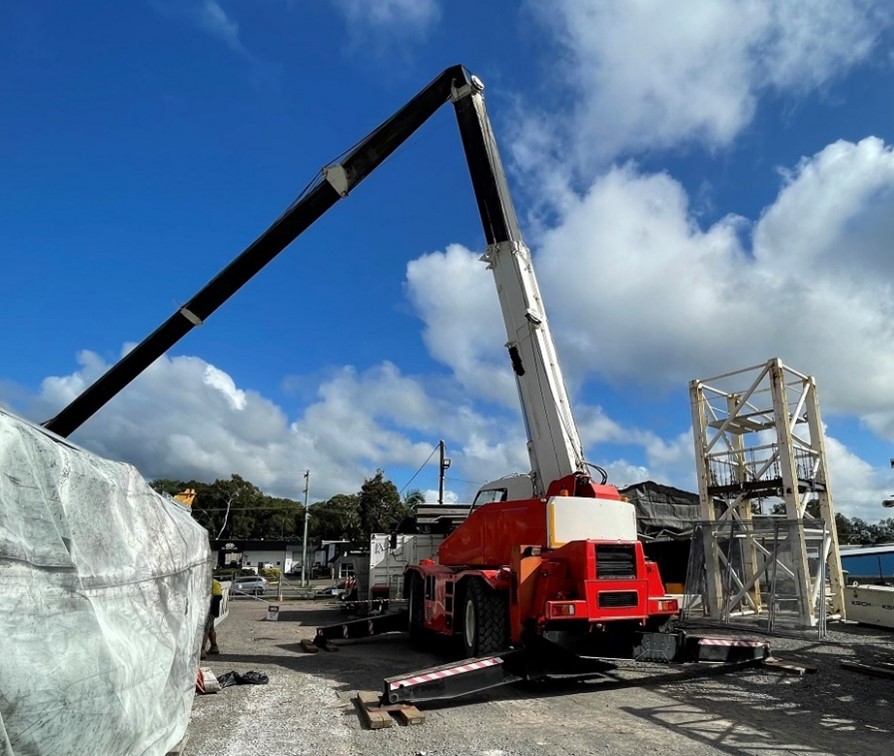Mobile crane boom failure and major inspections
Issued: 30/5/2022
Last Updated: 29/6/2022
Purpose
This safety alert highlights the risk of failure of mobile crane booms and the need for crane owners and professional engineers to follow manufacturer’s instructions when carrying out major inspections. The principles in this alert can be applied to other types of plant where there is risk of collapse or loads falling, including other cranes and concrete placing booms.
Background
On 5 May 2022, the boom on a 20 tonne MRC (maximum rated capacity) rough terrain mobile crane manufactured in 1998 failed while attempting to lift a tower section of a tower crane (refer Photograph 1). The third stage of the hydraulic boom buckled and the end of the boom and the lifted load fell to the ground. Nobody was injured.

Photograph 1: Mobile crane with failed boom.
A major inspection of this mobile crane was completed in 2019. Typically, major inspections are carried out on mobile cranes at intervals not exceeding 10 years, unless stated otherwise by the crane manufacturer. According to the crane manufacturer, information on the inspection criteria to be followed for the major inspection has been available on request since 2012.
According to the 2019 major inspection report, there was no need to dismantle the crane during the inspection, as the crane had only had moderate use. This method is sometimes called the “design working period” (DWP) method, and is referred to in the AS 2550 Cranes, hoists and winches – safe use series of Australian Standards.
A review of the major inspection report indicates a number of inspection criteria specified by the crane manufacturer were not part of the inspection. In particular, instructions on dismantling all of the boom sections to internally inspect the boom sections and internal components were not followed. The crane manufacturer’s inspection documentation specifies the boom is to be dismantled, irrespective of how much the crane has been used.
Engineers sometimes use the DWP method to justify not dismantling parts of a crane. It is to be noted that this method does not consider corrosion based on environmental factors, past potential abuse of the crane or load cycles experienced by the crane when being driven. In addition, if data loggers aren’t fitted, it can be difficult to verify how much use the crane has had.
Contributing factors
The cause of the incident has not been determined and investigations are ongoing.
Action required
All major inspections on mobile cranes must be comprehensive with a focus on examining critical areas that cannot be seen during routine and annual inspections. In relation to major inspections on mobile cranes, the Mobile crane Code of Practice 2024 (PDF, 2.29 MB) includes the following statement:
“Where the crane manufacturer specifies instructions for the major inspection, these instructions are to be followed and take precedence over the list below.” (i.e. the list in the Code)
The professional engineer overseeing the major inspection should comply with the manufacturer’s instructions as a minimum.
The decision to dismantle a crane for inspection should not be based on anecdotal evidence of minimal use. A report from the certifying engineer that does not meet the minimum inspection criteria in the code of practice is unlikely to discharge the duty a plant owner holds under the Work Health and Safety Act 2011 or the Work Health and Safety Regulation 2011.
Failure to follow the major inspection instructions of the manufacturer may result in enforcement action being taken by Workplace Health and Safety Queensland.
Further information
Further information can be obtained from the following: